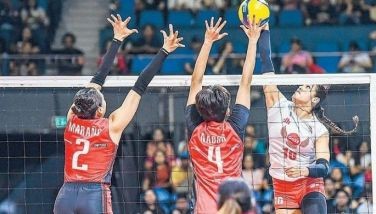Angara’s revelations

Sen. Sonny Angara disclosed several interesting comparisons between the Philippines and Thailand in the realm of sports during a speech at the first-ever Professional Sports Summit organized by the Games and Amusements Board (GAB) in the PICC, Pasay City, last Tuesday.
The revelations show the disparity in the advancement of sports in both countries and why Thailand has emerged a sports superpower in Southeast Asia. Angara’s findings are particularly relevant as the Philippines hosts the Southeast Asian Games this year.
From 2006 to 2016, Angara said the PSC received an average of P180 million a year. From 2015 to 2017, GAB was allocated an average annual budget of P75.43 million. “Compare these numbers to the 3.1 billion baht or P5.3 billion and the 6.4 billion baht or P10.9 billion appropriated for fiscal year 2019 to the Sports Authority of Thailand and the Ministry of Tourism and Sports,” he said. “For renovation alone, the Sports Authority of Thailand approved a budget of 571 million baht or nearly P1 billion to upgrade three stadiums to be used in the AFC U23 Championship Finals in January next year. Even though there is ample reason for the state to provide financial support for our athletes and the professional sports industry, such budgetary support has been anything but energetic.”
Inadequate infrastructure was another sore point that Angara noted. “One can argue that in fact, we have sports facilities of high quality around the Philippines,” he said. “The problem is that these are more often privately-owned spaces that charge exorbitant membership fees or stringent membership card-carrying requirements just to use. Where the rich and privileged get the opportunity to play, enjoy and nurture their passions for sports, the general populace do not. And that means the sports talents and potential of large numbers of our people remain undeveloped and unrealized.”
Angara said in Thailand, there are 68 stadiums and the biggest, the National Stadium in Bangkok has a seating capacity of 65,000. In Vietnam, he said there are 50 stadiums, including 13 with a seating capacity of 20,000 to 28,000. In Singapore, Angara mentioned that there are 21 stadiums, including the National Stadium with a seating capacity of 55,000 and the Marina Bay Floating Platform with a seating capacity of 30,000.
“In contrast, the Philippines only has 20 stadiums with at least a 10,000 seating capacity,” he said. “Our largest, the Philippine Arena, has a seating capacity of 55,000 and was inaugurated only in July 2014.”
Angara, however, said there are positive signs that brighten the outlook for the future. “There is much to look forward to and be hopeful for because of some very promising developments,” he said. “Between 2017 and 2018, the PSC received an average annual budget of P236.4 million. Of course, this skyrocketed to P5.393 billion this year on account of our hosting of the SEA Games. A similar story is true for GAB. Between 2018 and 2019, the agency received an annual average appropriation of P143.9 million. Next year, the budget included in the 2020 National Expenditure Program amounts to P123.4 million.”
Angara said other bright spots are the National Athletes and Coaches Benefits and Incentives Act or R. A. 10699, which provides a motivating boost for athletes and para-athletes alike, the creation of the Philippine Sports Training Center (PSTC) through R. A. 11214 to lay out a world-class, state-of-the-art complex, the establishment of sports academies and training centers in different parts of the country including Talisay in Cebu, Alfonso in Cavite, Dapa in Surigao del Norte, Oroquieta in Misamis Occidental and Tagum in Davao del Norte and the formation of a Philippine High School for Sports.
Angara said a budget of P3.5 billion is earmarked for the PSTC which will rise in a 40-hectare property straddling the boundaries of Pampanga and Tarlac. He said the facilities will include a baseball field, beach volleyball courts, bowling center, football field, gymnastics center, track and field oval, tennis courts, covered swimming and diving pools and a velodrome for track cycling.
“I implore all of us to never forget that every great athlete started off as a child who just wanted to play,” he said. “If we want to build a truly vibrant Philippine sports industry, we must be prepared to nurture talent and potential wherever it may be found across the country. This is why I advocate for no less than a ‘whole-of-nation’ approach to our grassroots sports development programs. In government parlance, we call it a ‘whole-of-government’ initiative when we say that the concerted efforts of different agencies and departments are needed to solve a particular problem or challenge. I’d argue that we should do something similar for sports – and this time, involve the entire country. Every portion of our society must be ready to help the next Filipino superstar athlete train and improve their craft. Because just as it takes an entire village to raise a child, it takes an entire nation to train an Olympic medalist.”
- Latest
- Trending





























